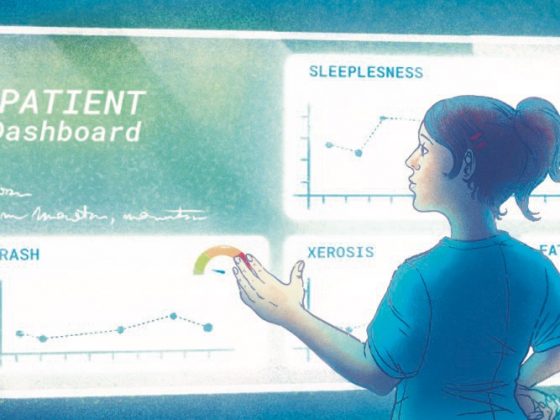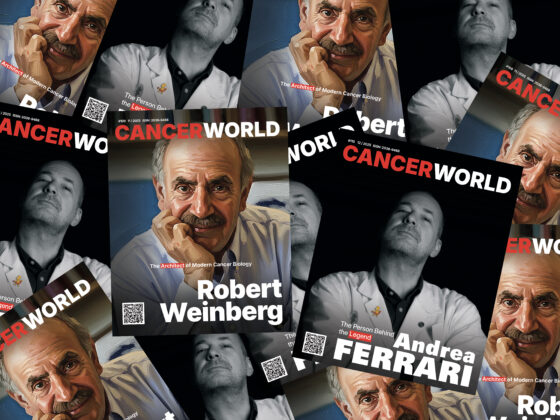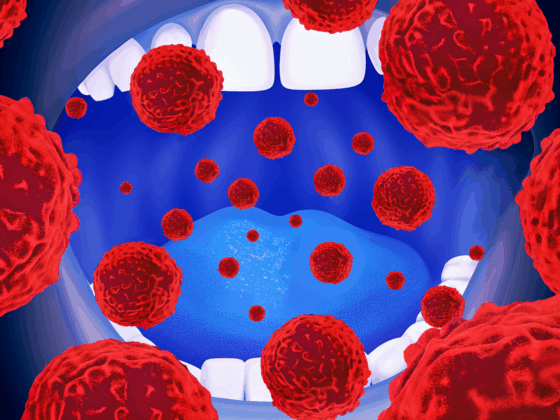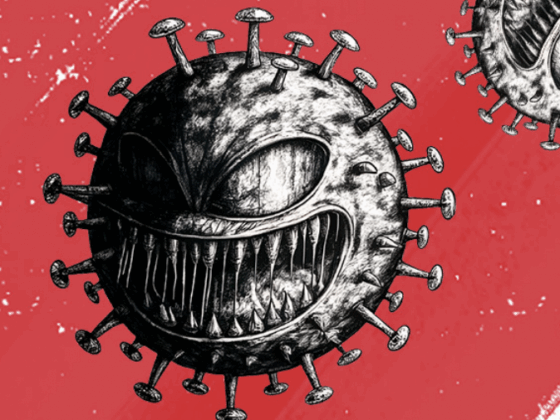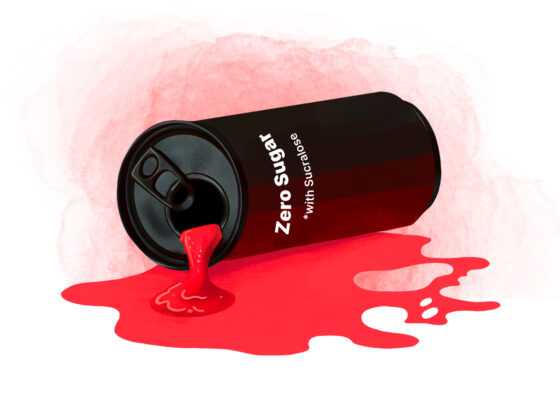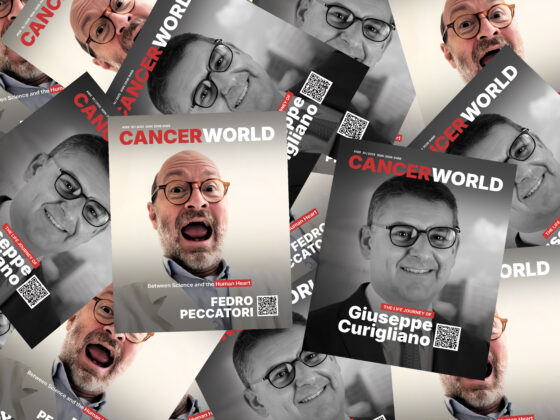A novel ultrasound device temporarily opens the blood–brain barrier to allow delivery of chemotherapy. The dose-escalation phase 1 study, published in Lancet Oncology, May 2, provides evidence that use of the new French technology leads to a fourfold increase in the concentration of paclitaxel and sixfold increase in concentration of carboplatin in the brains of patients with glioblastoma.
“This study provides the first direct evidence that LIPU-MBs (low-intensity pulsed ultrasound with concomitant administration of intravenous microbubbles) substantially increases the brain concentration of systemically administered drugs in humans. We report that large-volume blood-brain barrier opening is safe, reproducible, and can be repeated over multiple cycles of chemotherapy,” write the authors, led by Adam Sonabend, a neurosurgeon from Northwestern University Feinberg School of Medicine, Chicago. “Thus, large size drugs that previously were not used for gliomas could now be considered for the treatment of diseases in the brain, including glioblastoma.”
Despite aggressive treatment with surgery, radiotherapy and chemotherapy, the overall median survival of patients with recurrent glioblastoma remains at 15 to 20 months. One of the main causes of recurrence is the inability of chemotherapies to enter the brain from the systemic circulation due to the blood–brain barrier (BBB). The BBB, a selective semipermeable border consisting of endothelial cells wedged close together to form tight junctions, is unique to cerebral blood vessels. It protects the brain against circulating toxins or pathogens that could cause brain infections but has the negative effect of blocking most drugs from entering the brain in sufficient concentrations to be efficacious. That is why, despite being less efficacious than paclitaxel, temozolomide is the current standard of care for glioblastoma, due to its ability to cross the BBB. While previous studies injecting paclitaxel directly into the brains of patients with glioblastoma have proved promising in term of efficacy, they have been associated with brain irritation and meningitis.
The SonoCloud-9 (SC9) technology, developed by the French biotech company CarThera, uses LIPU-MB to transiently open the BBB for drug delivery. Following stimulation by ultrasound, microbubbles (administered intravenously) oscillate in brain capillaries, thereby generating mechanical stress in the endothelial wall, which then opens the BBB. While the approach has been shown to work in animal models and early clinical trials, the magnitude of the effect on drug concentrations in the brain has not been previously quantified.
For the current study, between October 2020 and February 2022, 17 adult patients with recurrent glioblastoma, with tumour diameters of 70mm or less and a Karnofsky performance status of at least 70, were enrolled. Following tumour resection, patients’ skulls were implanted with the novel nine-emitter ultrasound device, SC9, which was fixed to the bone using standard surgical screws. For each therapeutic cycle, the SC9 was activated by connecting it to a pulse generator through percutaneous access. Simultaneous with intravenous injection of microbubbles, the pulse generator activated the SC9 device for 4.5 minutes immediately followed by intravenous administration of chemotherapy. Researchers evaluated the impact of six alternative doses of IV albumin-bound paclitaxel (40 mg/m2, 80 mg/m2, 135 mg/m2, 175 mg/m2, 215 mg/m2, and 260 mg/m2) delivered every three weeks for up to six cycles.
Pharmacokinetic analysis was undertaken in a subset of patients whose tumour location justified resection of the peritumoural brain, with biopsy samples of sonicated and non-sonicated samples obtained from separate regions of the brain minutes after LIPU-MB.
All procedures were performed in outpatients with fully conscious patients who returned home after a few hours.
The team report that 68 cycles of LIPU-based blood–brain barrier opening were performed across all 17 patients, with a median of three cycles per patient.
At a dose of 260 mg/m2, grade 3 encephalopathy occurred in one of 12 patients (8%) during the first cycle, which was considered dose-limiting, and grade 2 encephalopathy occurred in one patient during the second cycle. In both cases, the toxicity resolved, with treatment continuing at a lower dose: 175 mg/m2 in the case of grade 3 encephalopathy and 215 mg/m2 in the case of grade 2.
Grade 2 peripheral neuropathy occurred in one patient during the third cycle of 260 mg/m2 albumin-bound paclitaxel.
Immediate yet transient grade 1–2 headache occurred in 71% of patients (12 out of 17). The most common grade 3–4 adverse effects were neutropenia (47%), leukopenia (29%) and hypertension (29%).
No surgical complications or infections were found relating to implanting the device.
Pharmacokinetic analysis of a subgroup of seven patients whose tumour location justified resection of peritumoural brain showed that LIPU-MB resulted in mean brain parenchymal concentrations of albumin-bound paclitaxel from 0.037 µM (95%CI 0.022–0.063) in the nonsonicated brain to 0.139 µM (95%CI 0.083–0.232) in the sonicated brain (P<0.0001).
A second pharmacokinetic analysis of three patients who received carboplatin in a similar study (NCT03744026) demonstrated an increase in mean brain parenchymal concentrations of carboplatin from 0.991 µM (95%CI 0.562–1.747) in the nonsonicated brain to 5.9 µM (95%CI 3.462–9.98) in the sonicated brain (P=0.0001).
“Overall, we confirmed our preclinical observation that enhancing the brain delivery of albumin-bound paclitaxel with LIPU-MB is well tolerated,” write the authors.
The analyses suggest that BBB integrity is restored within one hour of LIPU-MB. “This finding is important because it shows that a delay in drug administration after LIPU-MB is likely to lead to a peak in drug plasma concentrations when the blood–brain barrier is largely restored,” write the authors, adding that the finding will allow optimisation of the sequence of drug delivery and ultrasound activation to maximise drug penetration of the brain.
The results led to a phase 2 clinical trial in glioblastoma (NCT04528680), which started in December 2020, using the LIPU-MB technology to deliver albumin-bound paclitaxel plus carboplatin with the objective of investigating whether treatment prolongs survival. The two drugs used in combination have been shown to be effective in treating other types of cancer.
In an accompanying comment, Antonios Pouliopoulos, an expert in therapeutic ultrasound from King’s College, London, writes, “Agents deemed to have inadequate efficacy in clinical trials because of their inability to cross the blood-brain barrier, including antibodies and liposomes, could be reused in conjunction with ultrasound treatments.”
The fixed treatment volume of the implanted device, he adds, simplifies the clinical workflow, and minimises positioning errors that could arise from approaches such as neuronavigation-guided ultrasound treatment. “Due to its low cost and simplicity, this treatment regimen can be implemented in a variety of health systems worldwide, especially in under-resourced environments where access to medical imaging systems is scare,” Pouliopoulos adds.
Karen Noble, Director of Research, Policy, and Innovation at the UK charity Brain Tumour Research commented, “The results from this trial sound hugely encouraging. To be able to open the barrier with the patient awake, and for them to be able to go home after a few hours, could be totally game-changing. Being able to effectively cross the blood-brain barrier with new and existing drugs could lead to a revolution in care for brain tumours and for other neurological conditions.”



